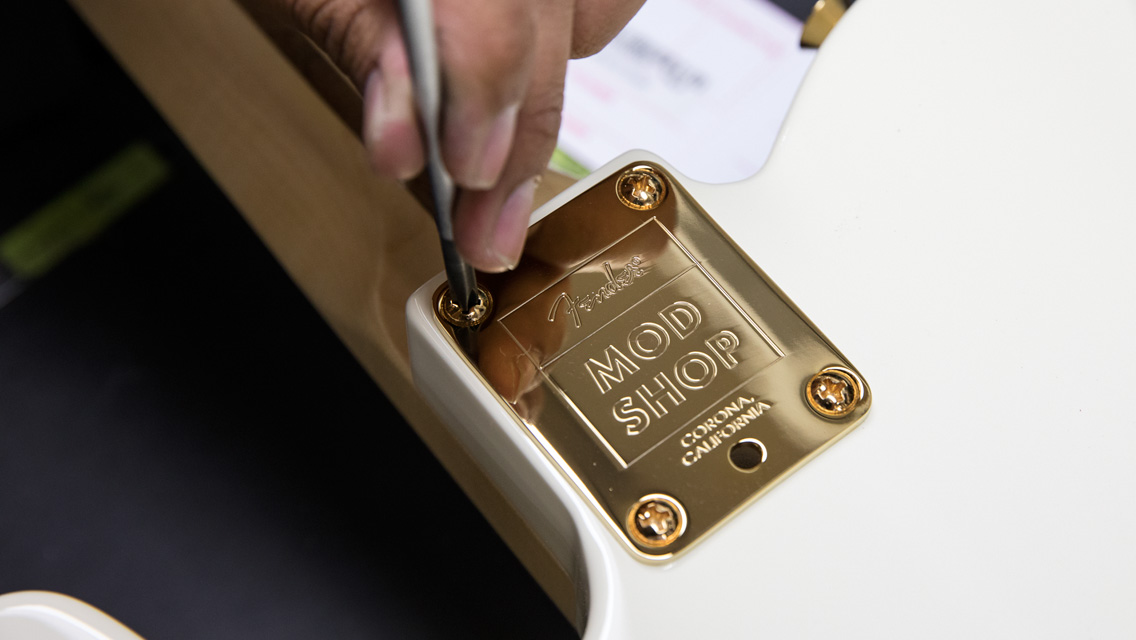By Ken Pearsall
Effects Guide: Get to Know Tremolo
From tube to transistor, here is everything you need to know about this classic effect.

Tremolo is a modulation effect that creates a change in volume, while the "tremolo arm" on your guitar is actually vibrato, which is varying pitch. These both can be used to create similar rhythmic effects, but the way it is created is much different.
Tremolo is used to make dramatic musical statements by players such as Johnny Marr, Marc Ribot, Duane Eddy and Johnny Greenwood.
Now that that issue is cleared up, let's dive deeper into tremolo.
What is Tremolo?
Tremolo is a modulation effect that rhythmically changes the volume of your signal.
This can happen in a variety of ways, but a few things are certain. An LFO (low frequency oscillator) is used to create a waveform that is used to turn the signal up and down.
The classic tremolo effects are usually made with sine or triangle waves. Sine waves are rounded waveforms that provide a lush, strong tremolo, while a triangle wave, with its straight, linear rise and fall, creates peaks and valleys that can command attention and cut through a mix.
With the LFO creating the guide for our volume change, we must have a way to control it, to make any musical use of it. Whenever you see tremolo in an amp or a pedal, you will normally have at least two controls; "Rate" (or "Speed") and "Depth". Rate lets us sync the effect to the tempo of our song, while Depth sets the limit of volume loss of the effect, from subtle variation to completely deadening the signal.
Once only found as a circuit in tube amplifiers, tremolo can now be found in stompboxes and multi-effects units. These also can include the ability to use waveforms outside the norm, such as squarewave. With the depth set to maximum, squarewave LFOs will just alternate the signal on and off, making for a dramatic effect.
Tube Bias Tremolo
The sound of the tremolo effect comes from not just the type of waveform the LFO is producing, but precisely how that waveform is used to change the volume.
While every player has their preference, a large number of guitarists still prefer the original tube amp bias type. This type works by using the LFO waveform (usually a sine wave) to vary the bias of the power tubes. This turns the signal up and down and lends a vibrato-like sound.
In fact, Fender amps use the term "vibrato" on their amps for this effect.
Duane Eddy’s massive hit, “Rebel Rouser”, is a great example of this effect in its heyday. The depth doesn't cut the volume completely, lending a lush rhythmic texture to the guitar at the forefront of this iconic recording.
Don’t miss out!
Be the first to know about new products, featured content, exclusive offers and giveaways.
Optical Tremolo
The optical tremolo circuit was also prominently found and well-loved in Fender amplifiers. This type of tremolo uses a light dependent resistor called an "optocoupler", also sometimes called a "photo cell".
In this type of circuit, the LFO is used to turn a light bulb on and off, varying the resistance in the optocoupler that turns the signal up or down. This is a very smooth effect, but it is known to be a somewhat lopsided wave. To our ears, this can sound more like a pulsating tremolo, and a lot of players find this more pleasing than bias types.
To hear this in action, look no further than “How Soon Is Now” by the Smiths. Johnny Marr’s iconic guitar effect for this song was accomplished using the amp tremolo of four Fender Twin Reverbs, two on each side of the stereo image of the recording.
Stompbox Tremolo
The majority of advances in tremolo technology have undoubtedly come in stompbox form.
The guitar pedal tremolos we have access to today can give you access to any waveform for LFO you can dream up. These can also use the same optical circuit as in many amplifiers. This gives you the ability to replicate many different types of classic tremolo and use the advanced waveforms such as squarewave to create stuttering effects you can’t achieve with amp tremolo.
Radiohead’s “Planet Telex” from the album, The Bends, highlights guitarist Johnny Greenwood’s strong tremolo to create a synth-like texture that pulsates throughout the song.
Adding Tremolo to Your Rig
Precautions should be taken when using tremolo in your pedalboard setup.
Where it fits best will vary dependent upon your particular setup and how many pedals you have, but tremolo should be placed near the end of this chain due to needing to vary the volume of the entire signal.
A few combinations can endanger its impact:
Subtle tremolo can be completely destroyed by running it before a compressor, which tries to diminish changes in volume.
If running a tremolo with high depth settings that turn the signal all the way down into a delay pedal, you can lose this dramatic volume change to the delay tails. This can also be a great way to use the effect, creating a rhythmic texture in two different ways.
You can also use a pedal tremolo along with amp tremolo at different rates and depth settings.
Conclusion
The subtle rhythmic complexity and dramatic tension that tremolo can give us is more than just a simple volume change. It’s a great tool in your arsenal to set a mood or convey emotion. To a greater extent than most other effects like distortion, compression or reverb, we can use tremolo to create an anthemic, rousing immediacy; a panic-inducing stutter, or an ambient soundscape when used subtly.
Want to try your hand at Fender's take on a tremolo pedal? Check out the Tre-Verb Digital Reverb/Tremolo pedal here.


